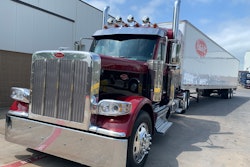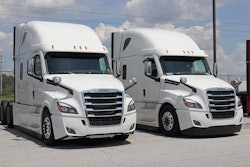Threat of a looming recession, bundled with slowing freight demand and rising interest rates, continues to send used heavy truck prices on the roller coaster trend that started three years ago.
Pandemic factory shutdowns and supply chain snarls sent used values skyrocketing through early 2022, but pricing has found consistency in a gradual return to normalcy, having declined for three consecutive quarters, according to data provided to CCJ by Price Digests. Heavy-duty truck values have been in nearly continual decline since March 2022, and last month retail asking values dropped 2.7% month-over-month and 20.67% year-to-date, according to Sandhills. Auction values also declined, falling 5.36% month-over-month and 29.89% year-over-year.
Average heavy-duty truck prices reached $62,719 in the first quarter of this year – a roughly $10,000 discount to the same quarter last year. Average mileage just barely crossed 442,000 miles at the point of purchase, about 10,000 fewer miles than the end of last year, but roughly the same as Q2 2022.
Price Digests Sales Engineer Sam Pierce added that the average Q4 mileage has increased significantly for vehicles aged 0 to 2 years, but starts to get back to normal as age increases. "This tells me that in 2022 people were putting a lot more miles on new trucks than usual," he said, "and it's cooled off in early 2023."
Truck age, at 9.6 years, is up considerably from last year's end. Age had fallen each of the previous three quarters, according to Price Digests. JD Power Director of Specialty Vehicles Chris Visser noted that contributing to the rise in average age are fleets and owner-operators continuing to offload their highest-mileage equipment because excess capacity is no longer needed, and Pierce added the unlocking of new truck build rates is putting older units into the secondary market as fleets settle back into replacement cycles.
"We’re in a period where fewer trucks are needed, so trucks with average and lower mileage are being traded in greater numbers," said JD Power Director of Specialty Vehicles Chris Visser. "Previously, trucks with lower mileage were kept in service or in reserve."










